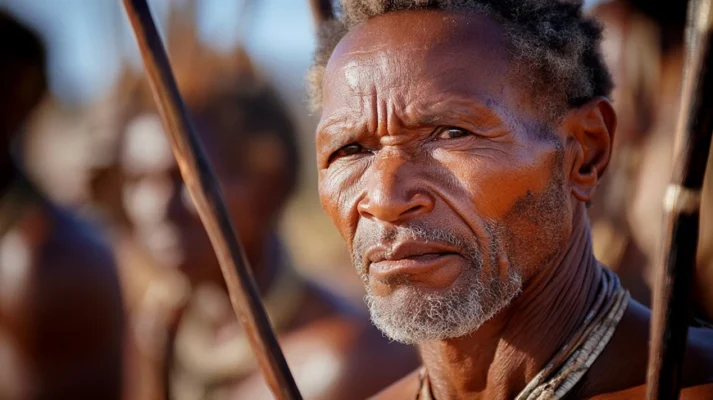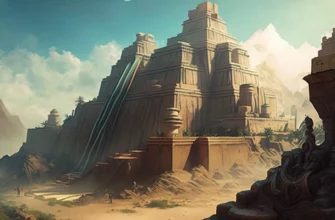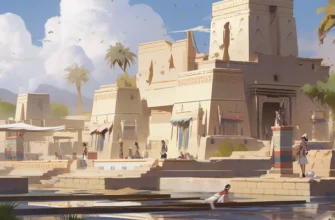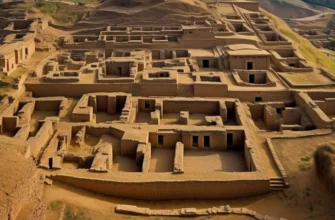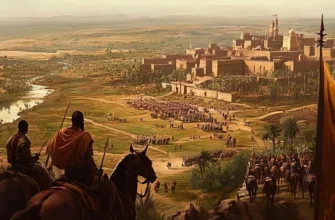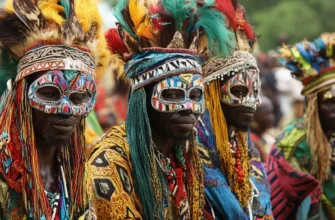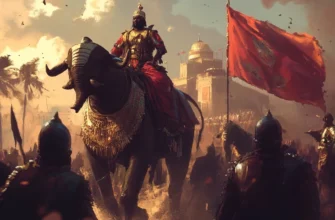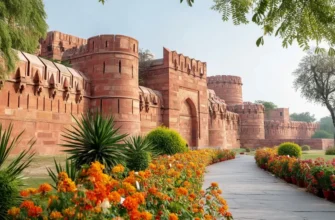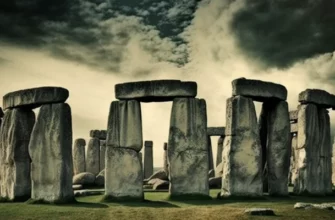The Khoisan peoples are the indigenous inhabitants of southern Africa, including the Khoikhoi (Hottentots) and San (Bushmen). They are considered one of the oldest ethnic groups in the world, with a history dating back tens of thousands of years.
Their ancestors separated from other human groups over 100,000 years ago, as confirmed by genetic research. Over the centuries, the Khoisan peoples have maintained a traditional hunter-gatherer lifestyle, adapting to the harsh conditions of the deserts and savannahs.
The Koisana languages are unique due to their use of click sounds, making them some of the most unusual languages in the world. Their culture includes rich folklore, traditional rock paintings depicting hunting scenes and spiritual beliefs, and special rituals related to nature.
Today, the Koisani people face discrimination and loss of identity due to colonization and the influence of modern society. Many have lost their traditional lands and are forced to adapt to a new way of life. Despite this, they continue to fight for their rights and are reviving their languages and culture to preserve their heritage for future generations. The Koyasan peoples are a living link to human history, and their cultural heritage is an invaluable part of world history.
The Koyasan peoples have played an important role in the history of Africa as some of its earliest inhabitants. They are bearers of a unique culture that was formed in prehistoric times and influenced the development of the region. Archaeological finds show that their ancestors inhabited the territory of South Africa tens of thousands of years ago, creating rock paintings that are a valuable source of knowledge about ancient life.
The Khoisan were the first to develop effective methods of survival in arid conditions, perfecting the hunter-gatherer lifestyle. They used their deep knowledge of nature, medicinal plants, and traditional technologies, which were later partially adopted by other African peoples.
Their languages, particularly their unique clicking sounds, are among the oldest language systems on the planet, providing insights into the evolution of language and communication in humanity.
Faced with expansion by Bantu peoples and later European colonization, the Khoisan underwent significant changes and lost much of their territory. Despite this, their cultural heritage remains an important part of African history, and their contribution to the preservation of traditional knowledge and harmonious coexistence with nature is invaluable.
- Origin and history
- Early ancestors and development
- Archaeological finds
- Contact with other peoples
- Colonization and its consequences
- Culture and traditions
- Language and unique clicking sounds
- Hunting and gathering lifestyle
- Use of plants in everyday life
- Religious beliefs and myths
- The role of shamans in society
- Current situation
- Conclusions
Origin and history
The Khoisan peoples are one of the oldest ethnic groups on the planet, with a history dating back tens of thousands of years. Genetic research shows that the Khoisan are descendants of the earliest human communities that lived in South Africa over 100,000 years ago. They were the first known inhabitants of the region and have preserved a way of life similar to that of the earliest humans.
Archaeological finds, such as rock paintings in the caves of the Drakensberg Mountains and other areas, testify to the rich cultural development of the Khoisan people. These images, dating back thousands of years, depict hunting scenes, religious rituals, and their ancestors’ perception of the world.
About 2,000 years ago, Bantu peoples, who were engaged in agriculture and cattle breeding, began to arrive in the region. This led to competition for resources, which resulted in the gradual displacement of the Khoisan from their lands. Later, during the period of European colonization, their territories were further reduced, and many members of the San and Khoikhoi peoples were forced to work for the colonizers or assimilate.
Despite their losses, the Khoisan peoples have preserved their language, traditions, and way of life. Their origins make them one of the most significant ethnic groups for the study of human history, and their heritage continues to play an important role in understanding ancient Africa and the origins of modern civilization.
Early ancestors and development
The Khoisan peoples are descendants of one of the oldest genetic lines of modern humans. DNA research shows that their ancestors separated from other human groups more than 100,000 years ago, making them some of the oldest representatives of Homo sapiens. This is confirmed by both genetic data and archaeological finds, including rock paintings and stone tools discovered in South Africa.
The Khoisan have always led a nomadic lifestyle, adapting to different ecosystems, from the Kalahari Desert to savannas and wooded areas. Their way of life was based on hunting and gathering, as well as a deep knowledge of nature. They used arrows with poisonous tips, were well versed in their environment, and passed on their knowledge from generation to generation through oral tradition.
One of the main cultural features of the early Khoisan people is rock art, which has been preserved in many caves in South Africa. These drawings depict hunting scenes, dances, and rituals, indicating a developed spiritual culture.
The development of the Khoisan peoples was largely determined by their ability to adapt to environmental changes. They preserved their traditions and language despite the influence of other peoples and remain an important part of Africa’s historical and cultural heritage to this day.
Archaeological finds
Archaeological finds testify to the thousands of years of history of the Khoisan peoples in South Africa. Some of the most important evidence of their ancient origins are rock paintings, stone tools, and remains of settlements found in various regions of Africa.
Rock paintings found in the caves of the Drakensberg Mountains, Namibia, and Botswana depict hunting scenes, ritual dances, and interactions between humans and animals. These images date back tens of thousands of years and are evidence of the advanced spiritual culture of the Khoisan people. The drawings, created using natural pigments, show that their authors not only observed nature but also sought to preserve their beliefs and way of life for future generations.
Archaeological finds also include stone tools dating back more than 20,000 years, which testify to the high level of skill in the manufacture of tools for hunting and gathering. Spearheads and arrowheads are of particular value, as they often contain traces of poison used for hunting.
Remains of settlements have also been found, indicating that some Khoisan groups may have led a more sedentary lifestyle, adapting to their environment. Recent discoveries show that the Khoisan had a complex system of social organization, traditions, and knowledge that was passed down from generation to generation even in prehistoric times.
Archaeological finds confirm that the Khoisan peoples are bearers of one of the oldest cultures on Earth, and their heritage is key to understanding the early history of humanity.
Contact with other peoples
Throughout their history, the Khoisan peoples have interacted with various ethnic groups, which has significantly influenced their way of life and culture. One of the most important stages of these contacts was the encounter with the Bantu peoples, who began migrating to South Africa about 2,000 years ago.
The Bantu had an advantage in agriculture and cattle breeding, which allowed them to occupy large territories. This led to the displacement of the Khoisan to less fertile lands, particularly the Kalahari Desert. Some groups of Khoisan were partially assimilated by the Bantu, influencing their culture, language, and way of life.
Significant changes took place during the period of European colonization. In the 17th century, when the Dutch began to settle in the southern regions of Africa, the Khoisan peoples faced new threats. European settlers seized their lands, using the Khoisan as a labor force or driving them out of their traditional territories.
At the same time, the Khoisan languages and cultural traditions began to decline under the pressure of the colonizers. Despite significant losses, the Khoisan managed to preserve part of their identity. Today, some Bantu peoples and even Afrikaners have Khoisan roots, which testifies to the centuries-old mixing and influence of the Khoisan on other cultures.
Although historical contacts were often accompanied by conflict, they also contributed to cultural exchange and left a deep mark on the development of South Africa.
Colonization and its consequences
The colonization of South Africa had disastrous consequences for the Khoisan peoples, who lost their lands, culture, and independence. The first contacts with Europeans took place in the 15th century, when Portuguese sailors reached the coast of Africa. However, the biggest changes came in the 17th century, when the Dutch founded the Cape Colony (1652).
Dutch settlers (Boers) began to expand their territories, displacing the Khoisan from their native lands. Since the Khoisan had no immunity to European diseases, epidemics, particularly smallpox, significantly reduced their population. In addition, due to armed conflicts and the expansion of the colonizers, many Khoisan were killed or forced to work on European farms as servants or slaves.
With the arrival of the British in the 19th century, the situation worsened even further. The colonial authorities continued their policy of discrimination, and the Khoisan eventually became one of the most marginalized groups in South Africa. The apartheid policy of the 20th century finally cemented their social and economic oppression, officially depriving them of their rights and status.
Today, the consequences of colonization are still felt: most Khoisan people have lost their traditional lands, and their languages and culture are threatened with extinction. However, in recent decades, there has been a growing movement to restore the rights of the Khoisan peoples, including the return of their lands and the recognition of their language and culture at the national level. Despite centuries of oppression, the Khoisan people continue to fight for their identity and historical justice.
Culture and traditions
The culture and traditions of the Khoisan peoples are among the most unique and ancient in Africa, reflecting their close connection to nature, spirituality, and social organization. For thousands of years, the Khoisan have preserved their way of life based on hunting, gathering, and a deep knowledge of their environment.
One of the most famous features of Khoisan culture is their language, which includes clicking sounds, making it one of the most unique languages in the world. The Khoisan people have many different dialects, but clicking sounds are characteristic of all their languages. This allows them to communicate effectively in open terrain, where sounds can travel long distances.
The Khoisan people traditionally live in small nomadic communities that are united by common labor efforts such as hunting and gathering. Hunting wild animals and gathering plants are the main sources of food for the Khoisan peoples. They use special hunting tools, such as poisoned arrows, and also have a deep knowledge of the medicines that can be obtained from plants.
The religious beliefs of the Khoisan are closely linked to their perception of the world, where nature and the spiritual world are inextricably linked. Shamans, who act as healers and spiritual guides, have great authority in society. They often perform rituals that include dancing, singing, and the use of natural substances to achieve changes in consciousness.
Art is also an important part of the Khoisan culture. The most famous are rock paintings depicting hunting scenes, religious rituals, and everyday life. These are not just artistic images, but important ritual objects through which knowledge and values are passed down from generation to generation.
Despite the changes brought about by external influences, many of the traditions and customs of the Khoisan peoples have survived to this day. Although modern problems such as marginalization and land loss threaten the disappearance of some aspects of their culture, the Khoisan continue to fight for the preservation of their traditions and language, as well as for the recognition of their history and heritage.
Language and unique clicking sounds
The language of the Khoisan peoples is one of the most unique in the world, and one of its main characteristics is the use of clicking sounds. These sounds, which resemble clicks, are an integral part of the Khoisan language systems and make their languages extremely different from most other languages on the planet.
In the languages of the Khoisan peoples, click sounds can serve various functions: they can be consonants or even vowels. There are three main types of click sounds, which differ in the place where they are produced in the mouth: alveolar, palatal, and glottal. Each of these types of clicks has its own meaning and can change the meaning of words, giving the language great flexibility and richness.
These click sounds are not only a linguistic feature but also a cultural asset that requires considerable effort to learn. For many people who are unfamiliar with such sounds, they may seem unusual or even difficult to reproduce. However, for native speakers, they are familiar and natural elements of everyday communication.
The Khoisan languages are extremely complex and rich, but due to historical and social conditions, many of them are now endangered. Modern researchers and language activists are actively working to revive and preserve these languages, as they are not only a means of communication but also carriers of the cultural heritage, traditions, and worldview of the Khoisan peoples.
The importance of click sounds goes far beyond their linguistic role — they are deeply rooted in the culture and worldview of the Khoisan people, reflecting their connection to nature and the environment.
Hunting and gathering lifestyle
The hunter-gatherer lifestyle was the basis of the Khoisan peoples’ existence for thousands of years. This way of life involved a close connection with nature and a deep understanding of the ecosystem, which allowed the Khoisan to survive effectively in a variety of environments, from arid deserts to forested and savannah areas.
The main activities were hunting and gathering food. The Koisan people led a nomadic lifestyle, moving from one place to another depending on seasonal changes and the availability of food. Hunting was an important part of their lives, and they used a variety of tools, such as poisoned arrows and bows. One of the main targets of hunting were antelopes, zebras, large and small mammals, and birds. Shooting animals required accuracy and silence, which reflected the experience and skill of the hunters.
Gathering plants and fruits was also important for the Khoisan diet. They collected fruits, roots, seeds, and medicinal herbs, which were used not only for food but also to treat various illnesses. Knowledge about edible and inedible plants was passed down from generation to generation.
One of the characteristic features of the Khoisan hunter-gatherer lifestyle was equality within communities. In such societies, there was no clear social hierarchy, and everyone contributed to food procurement and survival. This ensured a fair distribution of resources, where everyone had equal rights to food and other resources.
Traditional knowledge about nature, its seasonal cycles, and the behavior of animals and plants remains important even in the modern world, as it is part of the cultural heritage of the Khoisan peoples. Although many Khoisan people now lead a sedentary lifestyle, knowledge about hunting and gathering is still preserved in their traditions and practices.
Use of plants in everyday life
The use of plants in everyday life was an important part of the Khoisan peoples’ lives. They had a deep knowledge of the local flora and used plants not only for food, but also for making tools, medicines, clothing, and other necessary items.
This shows how much they interacted with nature and their environment, which let them use resources efficiently without hurting ecosystems. Food: One of the main ways they used plants was for food. The Khoisan people gathered fruits, roots, seeds, and other parts of plants, which were important sources of nutrition.
For example, the edible roots and tubers of some plant species, such as “mangopole” (a local plant species), served as staple foods. They also collected wild honey, and gathering wild fruits was an important part of their diet.
Medicinal plants: The Koisan people knew and used numerous medicinal plants to treat various ailments. The leaves, roots, flowers, and even the juice of some plants were used to make infusions, ointments, or decoctions that helped with injuries, colds, headaches, and other ailments. Some plants were also used as natural antiseptics to help treat wounds and cuts.
Technical use: Plants were also used to make various household items. Trees and other plants were used to make various tools, such as stone and wood arrows and spearheads for hunting. Vines and plant fibers were used to weave baskets, clothing, and containers for storing food and water.
Ceremonies and rituals: Plants also had religious significance in the Khoisan culture. For example, certain plants were used in ritual dances or ceremonies that had spiritual significance. Some plants were considered sacred and were used by shamans to perform rituals intended to connect with spirits or heal the sick.
Thus, plants were important not only in the context of the Koyasan people’s daily life, but also in shaping their worldview and spiritual practices. They used natural resources with great respect and knowledge, which allowed them to survive and thrive in the harsh conditions of South Africa.
Religious beliefs and myths
The religious beliefs and myths of the Khoisan peoples are deeply rooted in their perception of the world and reflect their close connection with nature, animals, and spirits.
Religious practices among the Khoisan are closely linked to shamanism, which is an important part of their culture and social structure. Shamans acted as spiritual guides, healers, and medicine men, able to call upon spirits for help in healing illnesses or performing rituals.
Worldview: The Khoisan believe that the world is inhabited by both physical and spiritual entities. They have a concept of two main realities: the visible (physical) and the invisible (spiritual). These two worlds interact, and many aspects of human life depend on the harmony between them. People, animals, plants, and natural elements such as the sun, moon, and rain have their own spirits that can influence human life.
Ancestral spirits and rituals: An important part of the Koyasan religion is the belief in ancestral spirits. The Khoisan believe that the souls of deceased ancestors do not leave this world but continue to influence the lives of their descendants. Rituals of communication with ancestral spirits are often performed through shamans, who conduct ceremonies involving dancing, singing, and meditation. It is believed that shamans can contact spirits during rituals by performing certain ceremonies to heal the sick or ensure the well-being of the community.
Myths and legends: The Khoisan have a rich oral folklore that is passed down from generation to generation through stories and legends. Myths explain the origins of the world, humans, animals, and natural phenomena. For example, there are myths about how the sun and moon came to be, why stars appear in the sky, or why certain animals have special characteristics. Animals in myths often have human traits and abilities, and their behavior serves as a lesson for humans. One of the most famous characters in myths is the cunning and wise trickster, who always has a few tricks up his sleeve.
Dances and rituals: Dances are an important part of religious practices. Shamans often use dances to enter a trance, which allows them to communicate with spirits. These rituals are accompanied by rhythmic music, singing, and special ritual costumes. Dances can be performed during festivals, healing rituals, or to achieve harmony with the forces of nature.
The religious beliefs and myths of the Koyas reflect their deep understanding of nature and the world, as well as their desire to maintain a balance between the material and spiritual worlds. They view life as a cyclical process in which it is important to maintain harmony with the environment, spirits, and ancestors.
The role of shamans in society
Shamans played an extremely important role in Koyasan society, combining religious, healing, and social functions. Their role was not limited to performing religious rituals, as they were also community leaders, healers, and mediators between the world of humans and spirits.
Spiritual leaders: Shamans were guides in the spiritual world, as they were believed to have the ability to communicate with spirits, including ancestral spirits and natural forces. Through rituals and trances, shamans could obtain important information or help from spirits for the community. They performed rituals that ensured well-being, health, and protection from evil spirits or misfortune.
Healers: An important function of shamans was to heal the sick. They used herbs, infusions, and other natural remedies for healing, and also performed magical rituals that were believed to help expel illness or remove “bad” energy from a person. They were considered not only doctors but also psychologists, as they could help a person get rid of fears or emotional trauma through ritual practices.
Mediators between worlds: Shamans played the role of mediators between the world of the living and the world of the dead. They believe that after death, the souls of ancestors do not leave this world but continue to influence the fate of the living. Shamans had the ability to communicate with ancestral spirits through meditation, trance, or rituals, which allowed them to receive guidance or prophecies about the future or make important decisions.
Ritual and social functions: Shamans also organized rituals and festivals that ensured social cohesion within the community. Their ceremonies were often accompanied by dancing, singing, and special costumes, which created an atmosphere of unity and helped strengthen social bonds. They could also mediate conflicts between community members, ensuring peace and harmony.
Wise men and teachers: Since shamans often possessed a great deal of knowledge, they served as teachers for younger generations. They passed on knowledge about nature, herbs, animals, as well as moral and cultural values. They held important information that helped maintain stability and balance in society.
In Koyasan society, shamans were highly respected and revered for their skills and connection to the spiritual world. They combined the roles of spiritual guide, healer, social leader, and guardian of traditions, making them some of the most important people in the community.
Current situation
The current situation of the Khoisan peoples is characterized by numerous challenges related to cultural assimilation, economic difficulties, social marginalization, and the loss of their traditional way of life. After the colonial periods and subsequent changes in the political and social structure, the Khoisan found themselves in difficult conditions that affected their lives and identity.
Disappearance of the traditional way of life: As a result of colonization and globalization processes, the traditional way of life of the Khoisan peoples has undergone serious changes. Previously nomadic communities were forced to settle, often due to the loss of land or restrictions on their access to natural resources. These changes led to a significant reduction in practices related to hunting, gathering, and other traditional activities.
Economic difficulties: Modern Khoisan communities face low living standards and high levels of poverty. Many live in conditions of social marginalization, often without access to quality education, healthcare, and jobs. Most Khoisan people live in rural areas with limited opportunities for economic development. This also leads many Khoisan people to seek work in cities, where they may face discrimination based on their ethnicity.
Language and cultural preservation: One of the greatest threats to the Khoisan people today is the loss of their languages and cultural traditions. Many of the languages, which include clicking sounds, are endangered as younger generations increasingly abandon traditional modes of communication in favor of more widely spoken languages such as Afrikaans or English. However, there are efforts by cultural activists and researchers to revive and preserve these languages.
Legal and political struggles: The Khoisan also face legal challenges when it comes to their land rights. In many cases, their land has been given to the state or large agricultural companies without proper compensation. They are fighting for recognition of their rights to traditional lands and autonomy, as well as for improved political representation at the national level.
Contemporary identity: Despite numerous challenges, many Khoisan people continue to actively defend their cultural identity. They try to preserve their traditions through music, dance, crafts, and other forms of self-expression. Many young Khoisan are interested in returning to their roots by learning traditional practices, languages, and rituals.
Contemporary initiatives: In recent decades, various initiatives have emerged to support the Khoisan peoples. These include projects to preserve their culture, revive traditional occupations, and the active work of civil society organizations and human rights defenders fighting to improve the legal status of the Khoisan, ensure access to education and health services.
Thus, the current situation of the Khoisan peoples is complex, but they continue to preserve their cultural heritage and fight for their rights in the face of modern challenges.
Conclusions
The Khoisan peoples occupy an important place in human history and culture due to their unique language, traditions, and way of life.
Their language systems, particularly the presence of click sounds, are among the rarest and most famous linguistic features in the world, making them important for linguistic research. In addition, their experience of coexisting with nature and using environmentally sustainable methods of hunting and gathering is important for our modern understanding of human-environment interactions.
The Khoisan have also made a significant contribution to cultural diversity by preserving their unique rituals, myths, and religious practices, which are important for studying ancient civilizations and folk beliefs. They represent a cultural heritage that reflects the deep connection between humans and nature, as well as survival skills in extreme conditions, which are not only an important historical legacy but also relevant to the modern world.
Prospects for preserving their heritage:
The prospects for preserving the cultural heritage of the Koisan peoples will depend on several factors. First, it is important to ensure the protection of their languages and traditions through educational programs and community initiatives.
As many Koisan languages are endangered, efforts to preserve and revive them are critically important. International organizations such as UNESCO and local activists must continue to support projects to study and document these languages so that they can be passed on to future generations.
Second, preserving traditional ways of life and ecological heritage must also be a priority. Modern initiatives that support sustainable land use, conservation of natural resources, and the development of ecotourism can help Koyasan communities preserve their traditions while improving their economic situation.
Finally, legal recognition of the Koyasan peoples’ rights to their lands and resources is an important step. Efforts to protect their rights, as well as active participation in political life, can ensure their social and cultural development and help restore traditional social structures.
Overall, preserving the heritage of the Koisan peoples requires a comprehensive approach that combines cultural, economic, and legal strategies. Only through active support and cooperation at the local, national, and international levels can their unique contribution to world culture be preserved.
